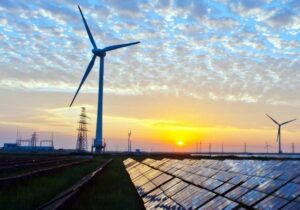 Romania suffers from applying the environmental requirements agreed at the EU level, even when the Romanian legislation reflects them „accurately”, according to The EU Environmental Implementation Review, a report by the European Commission (EC) on the application of the environmental policies.
Romania suffers from applying the environmental requirements agreed at the EU level, even when the Romanian legislation reflects them „accurately”, according to The EU Environmental Implementation Review, a report by the European Commission (EC) on the application of the environmental policies.
Many of the European requirements are not even transposed yet into the national legislation, reads the Commission’s document.
Of the 81 problems regarding the application of the EU standards, identified in the report, Romania has deficiencies in 36, according to the „Guidelines for the Member States”, which includes a set of so-called suggestions that the European Commission makes on 11 lines of action.
The 36 issues (or „challenges” in the diplomatic language of the EC report) are conditionalities that the Romanian Government has assumed since 2014.
The delay in fulfilling the 36 conditionalities may lead to the total or partial postponement of the payments under the operational programmes – 31 December 2016 was the deadline by which Romania had to meet most of the European environmental standards.
Top priority – waste management
Among the problems noted by the EC report for Romania, the most urgent issues to be solved are related to the waste management.
Romania is liable to pay this year a fine of EUR 1.74 million, plus penalties of up to 124,000 euros per day because the authorities failed to close the municipal landfills that do not meet the standards, according to a draft ordinance to amend the Emergency Ordinance 196/2005 regarding the tax on waste disposal.
The period of public consultation ended on 29 January 2017, but the Government has not approved the new emergency ordinance yet. The transposition of Directive 2012/19 / EU into the national legislation, for which the Romanian is responsible, should be made by 14 February 2017.
According to the EC report, Romania remained the last country from the EU in terms of:
- „Improving the administrative capacity and the coordination of agencies involved in the enforcement of the rules concerning especially the waste and water management, as well as improving the quality of the impact” (of the measures taken)
- „Speeding up the implementation of the strategy for strengthening the public administration, where the environment should be given due consideration”
Romania has a very serious problem in the field of waste: of 65 waste deposits, we have 20 that are not closed yet. 16 July 2017 is the deadline by which all non-compliant landfills throughout Europe should be closed. Otherwise, Romania could face new sanctions.
Circular underdeveloped economy
„Romania has not yet adopted a national policy for programme for a circular economy, although it does have some initiatives which support the transition to a circular economy, in particular focusing on waste”, says the EC report.
The circular economy means a management of recyclable resources. „In Romania, resource efficiency is low and the circular economy remains underdeveloped,” notes the European Commission.
In 2015, the „resource productivity” was one of the lowest in the EU, accounting for 0.31 euros/kg compared to the EU average of 2 euros/kg.
Figure 1: Resource productivity 2003-2015
 Romania has very low levels of recycling and composting, namely 16%, compared to the European average of 44%. However, the waste storage rate is the highest in the EU (82% in 2013).
Romania has very low levels of recycling and composting, namely 16%, compared to the European average of 44%. However, the waste storage rate is the highest in the EU (82% in 2013).
„This indicates that resources are not kept in the economy when a product has reached the end of its life. A more circular economy, meaning focused on recyclability and reusability, as well as a more efficient use of resources, would help stimulate investment. It would also generate both short and long-term benefits to the environment, employment, and overall economy,” mentions the report.
According to the European directives, Romania has to fulfil by 2020 the following targets in terms of recycling:
- 50% rate as a minimum level for re-use and recycling waste, of the total quantities of waste (paper, metal, plastic and glass)
- 70% rate as minimum level of preparation for re-use, recycling, and other waste material recovery
- 70% rate as a minimum level of the non-hazardous waste generated from construction and demolition activities
- 60% recovery rate of the total packaging waste from the total packaging materials in the national market
- an annual amount of electronic waste collected of 4 kg/capita
- separate collection of the bio-waste for composting and fermentation
Water, air and biodiversity
„The main pressure on Romanian surface waters is diffuse pollution that affects 33% of water bodies. Flow regulation and morphological alterations affect 13% and point sources of pollution affect 8% of water bodies,” says the EC report.
Also, Romania is still “under transitional periods for the implementation of the Urban Waste Water Treatment Directive”. It has, therefore, a limited number of compliance requirements in the field.
However, „the outcome of the last reporting exercise – even though it only concerned the expiry of the first transitional deadline in 2010 – was not promising, as only one out of 1,852 agglomerations in Romania was reported to be in full compliance„.
Figure 11: Urban waste water Romanian situation 2012 – Final deadline 2018
„Romania will, therefore, have to make a considerable effort to improve compliance in the coming years, as the final deadline in the Accession Treaty is the end of 2018”.
The report mentions in the „Air quality” section that in Romania, „the emission of several air pollutants has decreased significantly.” And „are within the currently applicable national emission ceilings.”
„Air quality in Romania continues to cause concern. For 2013, the European Environment Agency estimated that about 25,330 premature deaths were attributable to concentrations of fine particulate matter, 430 to ozone concentrations and 1,900 to nitrogen dioxide concentrations,” according to the report.
Figure 9: Attainment situation for PM10, NO2 and O3 in 2014
The report accuses in this regard the „exceedances in terms of the EU air quality standards. Romania must step up efforts to meet the EU air quality standards.”
The conservation status of the protected species is inadequate in 67.19% of cases, favourable in 19% of cases, unknown (8.42%) and, not least, unfavourable (5%), according to the document of the European Commission.











